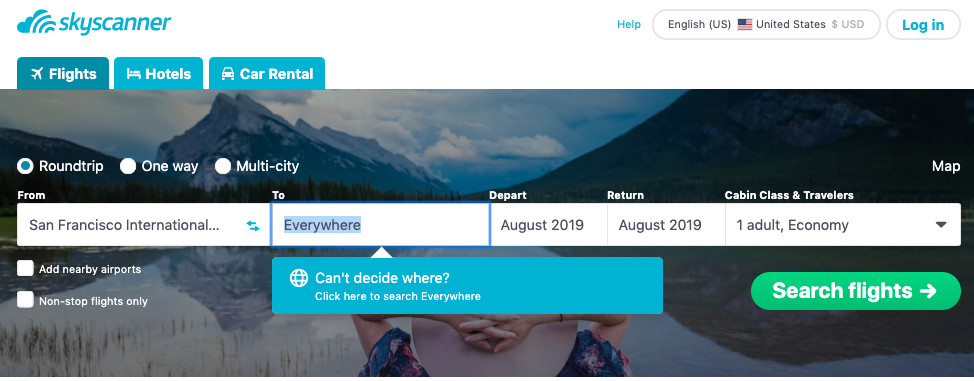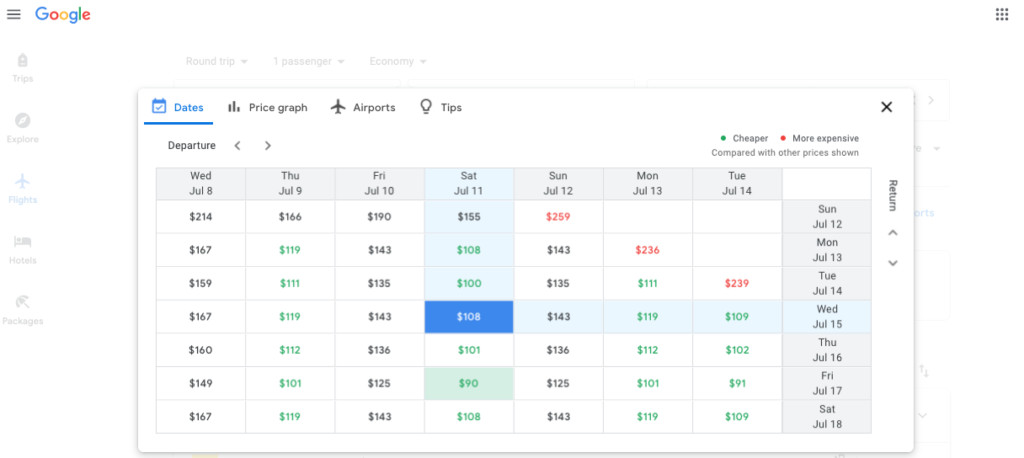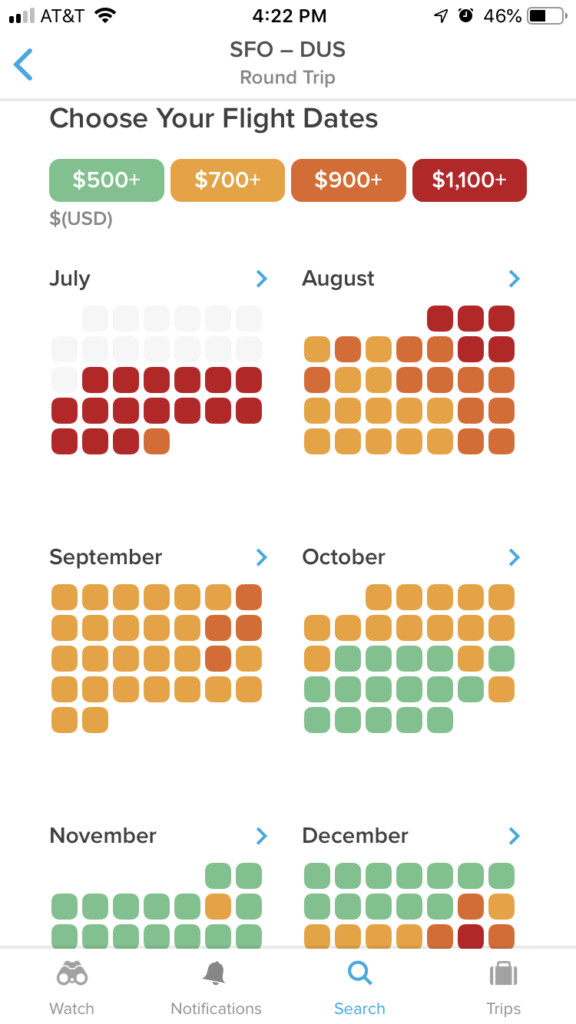Traveling the world is often seen as an expensive dream, reserved for the wealthy or those willing to splurge. Social media feeds are flooded with images of luxurious vacations, exotic destinations, and seemingly endless travel. This can easily lead to FOMO (fear of missing out) and the misconception that travel is financially out of reach for most. While it’s true that travel can be costly, it doesn’t have to break the bank. Many people are unaware of just how affordable travel can be with the right strategies. Witnessing friends spend exorbitant amounts on trips that could be done for a fraction of the cost is a common experience. To demystify budget travel and make it accessible to everyone, this guide will unveil the secrets to traveling cheaper, proving that adventure doesn’t require emptying your wallet.
While not strictly a “budget traveler” in the extreme sense, I am deeply “budget-conscious.” For years, I’ve explored the world comfortably, consistently spending significantly less than my peers on comparable trips. This guide shares those tried-and-true methods, focusing on practical, impactful ways to minimize your travel expenses without compromising the enjoyment of your journey.
1. Mastering the Art of Finding Cheap Flights
Flights often constitute the largest portion of travel expenses. The fantastic news is that securing cheaper flights doesn’t necessitate a downgrade in service or comfort. It’s about smart searching and leveraging available tools to find the best deals. Here are the most effective strategies for drastically reducing your flight costs:
Utilizing Skyscanner for Flight Searches
Skyscanner stands out as a top-tier flight search engine. Introduced during a study abroad orientation, it has remained a go-to resource for uncovering affordable flights. Skyscanner’s key advantages are twofold:
Firstly, Skyscanner includes budget airlines in its search results. Unlike many mainstream search engines that overlook budget carriers, Skyscanner provides a comprehensive view of available options. This is particularly invaluable when exploring new regions where the landscape of budget airlines might be unfamiliar.
Secondly, the “Everywhere” destination feature is a game-changer for spontaneous travelers. When destination flexibility is an option, or the primary goal is simply to find the cheapest getaway, the “Everywhere” feature becomes incredibly powerful. By inputting your departure airport and selecting “Everywhere” as the destination, followed by desired dates (or even “Whole month” for maximum flexibility), Skyscanner sorts results by price, presenting the most economical flight options first.
 Search results page on Skyscanner showing cheapest destinations from a departure airport
Search results page on Skyscanner showing cheapest destinations from a departure airport
Leveraging Google Flights for Comprehensive Flight Options
While Skyscanner holds a special place in many travelers’ toolkits, Google Flights is increasingly becoming a preferred platform for flight searches. Initially, its full potential might not be immediately obvious, but its robust features and user-friendly interface quickly reveal its value.
One of the most significant advantages of Google Flights is the ability to search for flights across multiple departure and destination cities simultaneously. This extends beyond simply selecting “nearby airports” and allows for true multi-city comparisons, broadening your search and increasing the chances of finding optimal routes and prices. Furthermore, Google Flights offers extensive filtering options, including the ability to include or exclude specific connection airports, giving you granular control over your itinerary.
The Date Grid feature is another standout element, providing a visually intuitive way to compare prices across a range of dates. This feature clearly highlights price fluctuations around your desired travel dates, enabling you to identify cheaper days to fly. Perhaps the most user-centric feature is the “Track Prices” option. After setting your search criteria and filters, activating price tracking ensures that you receive email notifications whenever prices change for your selected flights, empowering you to book at the opportune moment.
 Google Flights Date Grid feature showing flight prices for different dates in a grid format
Google Flights Date Grid feature showing flight prices for different dates in a grid format
Utilizing the Hopper Mobile App for Price Predictions
Hopper is a free mobile application, available for iPhone and Android, that leverages price prediction technology to help you secure the best deals on flights and hotels. While relatively new to many users, Hopper has quickly gained popularity for its proactive approach to flight savings.
With Hopper, you can specify flight routes that you are interested in monitoring. The app then actively tracks prices for these routes and sends notifications directly to your phone when prices drop, alerting you to potential savings opportunities. Hopper goes a step further by also notifying you of price drops for flights to nearby destinations, expanding your options for budget travel. The app allows for monitoring multiple flights concurrently, increasing your chances of finding a great deal. While Hopper also extends its services to hotel price tracking, its flight monitoring feature is particularly noteworthy for budget-conscious travelers.
 Hopper app welcome screen on a mobile phone
Hopper app welcome screen on a mobile phone
 Hopper app showing flight watch list on a mobile phone
Hopper app showing flight watch list on a mobile phone
 Hopper app displaying price prediction for a watched flight route
Hopper app displaying price prediction for a watched flight route
 Hopper app showing notification of a price drop for a watched flight route
Hopper app showing notification of a price drop for a watched flight route
Subscribing to Scott’s Cheap Flights Email List for Deal Alerts
For those in the know, Scott’s Cheap Flights is an indispensable resource for uncovering deeply discounted flight deals. This email list, curated by Scott, proactively alerts subscribers to significant flight price drops and mistake fares. These deals are often fleeting, typically lasting only a day or two at most, requiring prompt action to capitalize on the savings. A key advantage of Scott’s Cheap Flights is that the deals predominantly feature major airlines, ensuring a comfortable and reliable flying experience. The service offers both free and paid subscription tiers, with the free version providing substantial value. Free subscribers typically receive email alerts once or twice daily, presenting a consistent stream of potential flight savings.
Embracing Budget Airlines for Affordable Travel
Budget airlines are a polarizing topic in travel, eliciting strong opinions. However, they are undeniably powerful tools for achieving cheaper travel. For those familiar with European travel, airlines like RyanAir, EasyJet, Vueling, and EuroWings are household names. Asia and Latin America also boast their own networks of budget carriers. Even international budget airlines, such as Norwegian (and formerly WOW Air), have emerged to offer long-haul affordability. The crucial caveat with budget airlines is the absolute necessity of carefully reading the fine print. Failing to do so can lead to unexpected fees and frustrations. To navigate the nuances of budget airline travel, resources like detailed guides (e.g., a guide to flying RyanAir) can be invaluable, as the general principles apply across most budget carriers.
Packing Light and Traveling Carry-On Only
Traveling with only a carry-on bag is often a necessity when flying with budget airlines or domestically, but increasingly, major airlines are adopting similar baggage restrictions, particularly on international routes. “Basic economy” fares, now commonly offered alongside standard “economy,” come at a lower price point but often exclude checked baggage, flight changes, and sometimes even meals. While international or extended travel with only a carry-on might seem daunting, it is entirely achievable with strategic packing. Resources and guides dedicated to carry-on only travel can provide practical tips and packing lists to help you streamline your luggage and avoid checked baggage fees.
2. Securing Budget-Friendly Accommodation
After flights, accommodation typically represents the next largest travel expense. Overpaying for lodging can feel particularly disheartening, especially when travel days are spent exploring rather than in a hotel room. The ideal scenario is finding accommodation that is safe, clean, and conveniently located, without an exorbitant price tag. Fortunately, numerous strategies exist for saving significantly on accommodation costs.
Booking Vacation Rentals with AirBnB
AirBnB has become a ubiquitous platform for booking vacation rentals, offering a vast inventory of apartments, houses, villas, and unique stays like treehouses. Beyond just accommodation, AirBnB has expanded into offering “experiences,” further integrating itself into the travel planning process. However, its core strength remains in providing cost-effective accommodation options. AirBnB can be a particularly powerful tool for saving money, especially for group travel. Renting an entire apartment or house often proves more economical than booking multiple hotel rooms. Furthermore, AirBnBs are frequently located in central, residential areas, offering a more local and immersive travel experience. For first-time AirBnB users, introductory offers, such as discounts on the first booking and experiences, can further enhance the savings.
 AirBnB website homepage on a laptop screen
AirBnB website homepage on a laptop screen
Opting for Hostels for Budget-Conscious Stays
Hostels often carry a stereotypical image, but in reality, modern hostels are diverse and cater to a wide range of travelers. While initial skepticism is understandable, exploring reviews and traveler photos can often dispel misconceptions. Hostels offer numerous advantages, particularly for budget travelers and solo adventurers.
Firstly, hostels are undeniably budget-friendly. In Europe, average nightly rates in hostels can range from $20 in countries like Germany, Scotland, and Austria during winter, to around $34 in Italy during summer. In regions like Latin America or Southeast Asia, hostel prices can be even lower, frequently under $10 per night. Platforms like Booking.com (which includes hotels and guesthouses in addition to hostels) and HostelWorld (specifically focused on hostels) are excellent resources for finding and booking hostel stays. Many booking platforms also offer introductory discounts or cashback rewards for first-time users.
Secondly, hostels foster a social atmosphere, ideal for solo travelers. They provide opportunities to meet other travelers, and many hostels organize social events, city tours, and game nights, combating potential feelings of isolation during solo trips.
Thirdly, hostels often feature communal kitchens, a significant money-saving amenity. Having access to a kitchen allows you to purchase local groceries, often at significantly lower prices than in your home country, and prepare your own meals, further reducing daily expenses. This combines accommodation savings with food cost savings.
For travelers with privacy concerns, many hostels offer single-sex dorm rooms (all-male or all-female), providing a more comfortable and secure shared accommodation experience.
Exploring Couchsurfing or Housesitting for Free Accommodation
Couchsurfing and housesitting represent even more budget-conscious accommodation options, offering the potential for free stays. Couchsurfing involves staying with local hosts, typically for free, often on a couch or spare bed. Hosts participating in Couchsurfing are generally motivated by a desire to meet new people and share cultural experiences. Housesitting is another emerging trend where you stay in someone’s home for free while they are away, typically in exchange for looking after the property and sometimes pets. Housesitting assignments can range from short stays to a month or longer. While these options offer significant cost savings, personal comfort levels and safety considerations, especially for solo female travelers, should be carefully evaluated.
Booking Accommodation in Advance for Better Deals
Unlike flights, last-minute deals on desirable accommodation are rare. To maximize your choices and secure the best value, booking accommodation as far in advance as possible is recommended. The most affordable and highly-rated places, whether hotels, BnBs, or hostels, tend to book up quickly. Procrastinating on accommodation bookings can limit your options and potentially lead to settling for more expensive or less desirable places.
3. Choosing a Budget-Friendly Destination
One of the most impactful ways to reduce overall travel costs is to select a destination that is inherently more affordable. This extends beyond just accommodation and encompasses savings on meals, local transportation, activities, and souvenirs.
Visiting Destinations with Lower Costs of Living
Opting for destinations with a weaker currency compared to your home currency can significantly stretch your travel budget. Examples include European countries outside the Eurozone or entire regions like South America or Southeast Asia, where the cost of living is generally lower. Even within regions, less tourist-saturated destinations, such as Portugal compared to Spain, can offer substantial savings. Choosing a budget destination is particularly beneficial for longer-term travel, as the lower daily expenses can offset the initial cost of flights, resulting in a significantly lower overall per-day spending.
Traveling During the Off-Season or Shoulder Season
If your heart is set on visiting popular, high-currency destinations, consider traveling during the off-season or shoulder season. Off-season travel, particularly to destinations like Europe, can yield significant savings. For example, traveling to Iceland in winter can result in substantial discounts on campervan rentals and flights. In some cases, daily savings can be as high as $100 or more. For destinations where off-season weather is less appealing, the shoulder season (the periods just before and after peak season) offers a compromise. Shoulder season travel often provides a balance of pleasant weather, fewer crowds, and lower prices. Visiting Croatia in May, for instance, can mean paying half the price for attraction entrance fees compared to peak summer months like July and August.
4. Avoiding Foreign Transaction Fees
Foreign transaction fees can erode your travel budget without you even realizing it. It’s surprising how many travelers overlook this easily avoidable expense. Most credit cards impose a 3% foreign transaction fee on purchases made outside your home country, and many debit cards levy the same 3% fee plus a flat ATM fee (around $5) each time you withdraw cash from a foreign ATM. While these percentages and fees might seem small individually, they accumulate rapidly, especially over longer trips.
For trips exceeding a week, consider opening a travel rewards credit card before departing. Prioritize cards that explicitly waive foreign transaction fees. These cards have been a consistent source of savings for frequent travelers. Additionally, opening a checking account with institutions like Charles Schwab, which offers a debit card with no foreign transaction fees and ATM fee rebates, can be highly advantageous. These debit cards provide convenient and cost-effective access to cash while abroad.
5. Saving Gradually in Advance of Your Trip
Traveling cheaply doesn’t equate to traveling for free. Regardless of how effectively you implement budget travel strategies, trips still require financial resources. However, proactive saving can make travel more accessible and less financially burdensome.
Skipping Daily Coffee Shop Purchases
Consider the cumulative cost of daily coffee shop visits. Purchasing a $5 coffee three times a week adds up to $60 per month. While seemingly insignificant, $60 can equate to a round-trip flight within Europe on a budget airline, ten nights of hostel accommodation in Ecuador or Thailand, or the entrance fee and train journey to Machu Picchu. Making coffee at home, at least in the months leading up to a trip, can redirect these funds towards your travel savings.
Reducing Restaurant Meals
Dining out, while enjoyable, can significantly impact your budget. Even occasional brunches at around $20 per meal can accumulate quickly. Preparing meals at home or opting for healthier, budget-friendly frozen meal options can drastically reduce food expenses. Suggesting lower-cost hangout alternatives to friends can also contribute to savings. Meal prepping on a weekly basis ensures readily available meals after work, minimizing the temptation of takeout. Reducing restaurant meals, especially in the lead-up to a trip, frees up funds for travel experiences and is a habit you’ll likely adopt while traveling to save even more.
Starting to Save Well in Advance
The most sustainable and effective approach to saving for travel is to start early and save gradually over time. Small, consistent savings become less noticeable in daily life but accumulate substantially over months. Saving $60 per month on coffee and $150 per month on dining out translates to $1,260 in savings over six months. This amount is comparable to the cost of a 3.5-week backpacking trip through Europe. As the adage goes, “The best time to plant a tree was 20 years ago. The second best time is now.” The same principle applies to saving for travel; the sooner you start, the sooner your travel dreams become reality.
WHAT ARE YOUR THOUGHTS?
Do you still perceive travel as prohibitively expensive? What are your personal strategies for traveling cheaper? Sharing additional tips and insights is always welcome! Feel free to contribute your budget travel wisdom in the comments below.
Pin It For Later
 Vertical Pinterest pin image with text overlay: Traveling on a budget? I go into detail on specific ways I travel cheap, without giving up much.
Vertical Pinterest pin image with text overlay: Traveling on a budget? I go into detail on specific ways I travel cheap, without giving up much.
 Vertical Pinterest pin image with text overlay: Traveling on a budget? I go into detail on specific ways I travel cheap, without giving up much.
Vertical Pinterest pin image with text overlay: Traveling on a budget? I go into detail on specific ways I travel cheap, without giving up much.
 Vertical Pinterest pin image with text overlay: Traveling on a budget? I go into detail on specific ways I travel cheap, without giving up much.
Vertical Pinterest pin image with text overlay: Traveling on a budget? I go into detail on specific ways I travel cheap, without giving up much.

